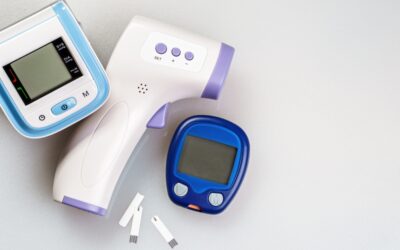Type 2 diabetes is a chronic disease that affects the way the body processes blood glucose. However, the good news is that, in many cases, this disease can be prevented or significantly delayed through lifestyle changes. In this article, we will explore in depth how you can reduce your risk of developing type 2 diabetes through weight loss, physical activity and other healthy habits.
The Type 2 Diabetes Epidemic
Type 2 diabetes has become a global epidemic. The World Health Organization estimates that there are more than 400 million people with diabetes worldwide, and the vast majority of these cases are type 2 diabetes. This disease is closely linked to obesity and sedentary lifestyles, making it a largely preventable disease.
Weight Loss: A Crucial Step
One of the key factors in preventing type 2 diabetes is weight loss. Excess body fat, especially in the abdominal area, is strongly associated with an increased risk of diabetes. Abdominal fat can trigger an inflammatory response in the body and reduce insulin sensitivity, which increases the risk of diabetes.
To reduce the risk, it is critical to set a realistic and sustainable weight loss goal. Losing even 5-10% of body weight can make a big difference in preventing type 2 diabetes.
Dietary Changes
Diet plays a crucial role in preventing type 2 diabetes. Some important tips for modifying your diet include:
Control portions: Reducing portion sizes can help limit caloric intake and help you lose weight.
Eat fiber-rich foods: Fiber-rich foods, such as fruits, vegetables and whole grains, can help stabilize blood sugar levels.
Reduce sugar and simple carbohydrate intake: Limiting consumption of added sugars and foods high in simple carbohydrates can help control blood glucose levels.
Choosing healthy fats: Opting for healthy fats, such as those found in olive oil and avocado, can have a positive impact on insulin sensitivity.
Physical Activity: Keep Moving
Regular exercise is another key component in preventing type 2 diabetes. Exercise helps improve insulin sensitivity and maintain a healthy weight. Some tips for incorporating physical activity into your daily life include:
Find an activity you enjoy: This will help you stay motivated and make exercise a natural part of your routine.
Set realistic goals: Start with achievable goals and gradually increase the intensity and duration of exercise.
Include resistance exercise: Combining aerobic and resistance exercise can be especially effective for improving insulin sensitivity.

Maintain a Healthy Weight for the Long Term
Preventing type 2 diabetes is not just a matter of losing weight temporarily, but of maintaining a healthy weight over the long term. This involves a permanent change in your lifestyle and habits.
Other Risk Factors and Additional Tips
In addition to weight loss and physical activity, there are other risk factors that should be considered in the prevention of type 2 diabetes. These include:
Stress management: Chronic stress can negatively affect blood glucose levels, so it is important to incorporate stress management techniques into your daily routine.
Get enough sleep: Lack of quality sleep can increase the risk of type 2 diabetes. Try to make sure you get 7 to 9 hours of sleep each night.
Healthy family habits: If you have a family history of type 2 diabetes, it is important for the whole family to adopt a healthy lifestyle to reduce your risk.
Regular medical checkups: Getting regular medical checkups can help detect and treat any diabetes-related health problems early.
Preventing type 2 diabetes through lifestyle changes is a gradual process that requires commitment and ongoing effort. However, the long-term health benefits are well worth the work. Adopting a healthy lifestyle not only reduces the risk of type 2 diabetes, but also improves overall quality of life. So go ahead, take control of your health and reduce your risk of type 2 diabetes through these positive lifestyle changes!
The Role of the Antioxidant Scanner in Health Monitoring:
Diabetes is a chronic disease that affects millions of people worldwide, and type 2 diabetes in particular is strongly related to insulin resistance and imbalanced blood glucose levels. However, there is another underlying factor that plays a crucial role in the development and progression of diabetes: oxidative stress.
Oxidative stress occurs when there is an imbalance between free radicals, unstable molecules that can damage cells, and antioxidants, substances that help neutralize these free radicals. In the context of diabetes, oxidative stress can aggravate insulin resistance, contribute to inflammation and damage organs and tissues.
The antioxidant scanner has become a valuable tool to better understand how oxidative stress is related to diabetes and how it can be used to monitor and improve the health of people with diabetes.

How is the Antioxidant Scanner Related to Diabetes?
The antioxidant scanner is a technology that allows the measurement of antioxidant levels in the body, as well as assessing the body’s ability to combat oxidative stress. In the context of diabetes, this has several important implications:
1. Assessment of antioxidant status: The antioxidant scan can provide information about the balance between antioxidants and free radicals in the body of a person with diabetes. If an imbalance is found, it may be an indicator of an increased risk of diabetes-related complications.
2. Effect of diet and lifestyle: The antioxidant scan can help people with diabetes understand how their diet and lifestyle affect their antioxidant levels. It can be a motivational tool to make changes in diet and exercise.
3. Monitoring progress: For people with diabetes who are trying to improve their health and manage their disease, the antioxidant scan can be a way to monitor progress as they make lifestyle changes. If antioxidant levels improve, it is a sign that their efforts are yielding positive results.
The antioxidant scan plays an increasingly important role in the understanding and management of diabetes. By providing information about oxidative stress and antioxidant levels, it can help people with diabetes make more informed decisions about their health and take proactive steps to prevent diabetes-related complications. Health monitoring through the antioxidant scanner is becoming an integral part of managing diabetes and promoting a healthy lifestyle.
We invite you to participate in our free webinars twice a month, every Thursday at noon (-07:00 GMT, Pacific Time). These webinars cover a variety of topics related to natural health, wellness and business, and provide valuable insights and information that can help you improve your overall health and wellness.
At Functional Wellness Network, we work to transform the way healthcare is delivered, benefiting both you and your patients. Visit our website at www.functionalwellnessnetwork.com to begin your journey toward improving patient care and achieving optimal health outcomes. We are committed to providing solutions that contribute to a healthier world.
We look forward to seeing you as we move forward together toward a healthier, more balanced future!
Dr. Kent Nelson
Functional Wellness Network
www.functionalwellnessnetwork.com
_
_




